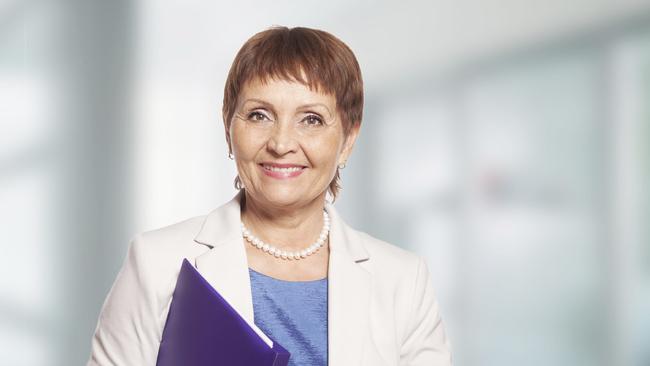Gendered ageism is the blind spot in STEM drive for greater diversity

A 61-year-old senior science manager was interviewed for a role at a top Australian university. She was told she would do the job well but was “too experienced”. Was that code for “too old”?
A digital communications expert doesn’t correct her colleagues when they assume she is younger. The tech world is wall-to-wall male, with a median age under 30 in some big tech companies. It’s difficult to hide your gender so, if you want to keep working, best to stay quiet about your age, she figures.
It’s no secret that the science, technology, engineering and maths sector has a diversity and inclusion problem. During the past few years there has been a torrent of initiatives designed to rebuild the sector on a foundation of diversity and inclusion. It includes the federal government’s seven-year $41.2m Boosting the Next Generation of Women in STEM fund. But there’s a blind spot when it comes to fixing gendered ageism in STEM – the double jeopardy of being marginalised due to gender and age.
The Women in STEM Decadal Plan, from two of Australia’s learned academies, is all about achieving gender equity in STEM. It fails to even mention gendered ageism, let alone recommend ways to combat it.
University diversity and inclusion strategies routinely ignore ageism of any stripe.
Government-sanctioned activities to boost female participation in the STEM workforce focus predominantly on “feeding the pipeline” by getting girls and young women to sign up. But they fail to mention to these young women that they will experience a workplace unnaturally devoid of older women and a likely prematurely curtailed career.
By ages 60 to 64, just 52 per cent of women with vocational STEM training remain in the workforce, compared with 67 per cent of men, according to the 2020 Australia’s STEM Workforce report. When it comes to university-educated workers aged 60 to 64, 57 per cent of women remain in the workforce compared with 68 per cent of men.
Whether mature-aged female workers lost from the STEM workforce were pushed or jumped remains unexamined.
What we know is that age discrimination comes second only to concerns about gender discrimination in surveys of STEM workers in the US and Britain, and that mature-aged women across the Australian workforce are perceived as less employable than men.
If you happen to be a mature-aged STEM women, this has the makings of a financial nightmare. The gender pay gap and employment breaks for unpaid caring work mean women approach retirement with less superannuation than men. A forced early retirement can be the tipping point to financial insecurity. Older women are the fastest-growing group at risk of homelessness. It would be naive to assume that female STEM workers are not among their numbers.
The STEM sector also loses out when it squanders an expensively trained human resource rich in experience, knowledge, sector memory and emotional intelligence. So does society. The benefits of a diverse STEM workforce include the ability to deliver better solutions by having a deeper understanding of society built in. As society ages, it makes sense to have mature-aged workers on the STEM team.
The Australian government’s Pathway to Diversity in STEM Review is evaluating programs designed to increase participation of women in STEM. It intends to boost diversity in the STEM workforce to help the government achieve 1.2 million technology-related jobs by 2030 and can’t afford to have mature-aged female workers relegated to the bench.
If it looks, the review will discover that the same issues that fuel gendered ageism create the blind spot that prevents us from solving it. These include the stereotypes that mean older women are more likely than older men to be perceived as having outdated skills.
Gendered ageism is sustained by workplace norms that still value women for youthful looks above skills and knowledge, and the baseless meme that innovation is the purview of young, male minds. It’s maintained by the drive for more women in STEM leadership being confused with working for the equitable treatment of all older female STEM workers.
The STEM sector is getting good at deploying tactics to encourage diversity. Tactics such as unconscious bias training, fairer recruitment and promotion practices, and showcasing diversity are deployed to tackle discrimination against people of colour, women, Indigenous Australians, people with disabilities, and LGBTIQ+ people. The mystery is, why are they not also being applied to ageism, including its most potent form, gendered ageism?
The Pathway to Diversity in STEM review shares its draft recommendations later this year. It must recommend that the STEM sector fixes this diversity blind spot.
Rachel Nowak is a scientist, an award-winning science journalist, a consultant and a mature-aged STEM worker.



A 53-year-old engineer I know ignores jokes about age from her teammates. Arcing up would out her as an older worker and she figures that wouldn’t be good for her career. For the same reason, she never mentions the grandkids at work.